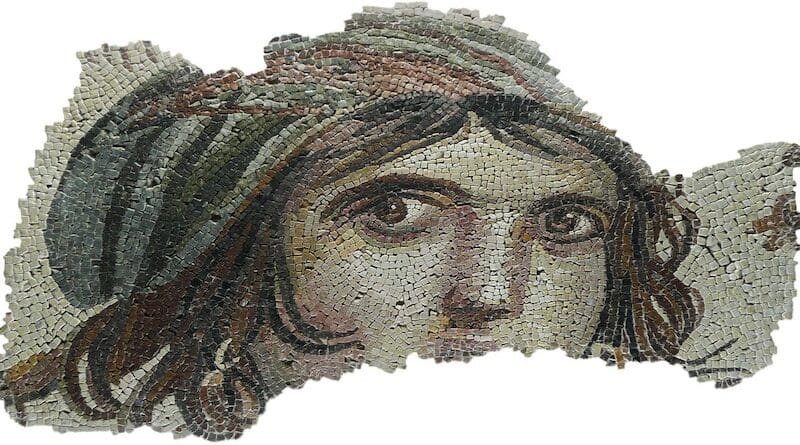Archaeology Can Now Tell Us How People Have Muffled And Challenged Economic Inequality Across History – Analysis
Without archaeology, there is no way to truly examine economic inequality, its causes, and its consequences over very long time spans on a global scale. Until recently, most grand narratives that purported to tell the story of human inequality over time tended to focus either on European history of the last five to six centuries or snapshots of recent societies, derived following colonial encounters with people around the world. These were then pyramided into proposed stepped sequences of change that were presumed to mimic unilinear temporal processes. Whereas the former was not global, the latter was not even historical.
Well into the 20th century, European history and its colonial global impact empirically underpinned our conceptual lenses on inequality. For this reason, it is hardly surprising that to the present, our grand narratives on the topic tend to see increasing wealth disparities as inevitable. Inequality is seen as a byproduct of population and economic growth, only potentially reversible through the spread of a supposedly nascent rationality birthed at the outset of the modern era, with the rise of the West and the program of governance and education it offered. Alas, over the last decades, as inequality spirals, nowhere more than at the heart of the West in the United States and the United Kingdom, the long-entrenched grand narratives now seem naive and out-of-date.
Fortunately, over the last half-century, archaeologists have gone to work looking beyond ancient temples and tombs and, instead, have been mapping sites and excavating houses. By broadening their vantage beyond kings and courts, archaeologists in many regions of the world have and continue to gather data on diverse segments of past societies; farmers as well as rulers. The systematic cumulation of these data, with a focus on houses, lies at the core of the GINI project, a broad collaborative effort led by Timothy A. Kohler (Washington State University), Amy Bogaard (Oxford University), and Scott Ortman (University of Colorado), which has measured and coded more than 50,000 houses from more than 1,000 archaeological sites.
During the past and present, disparities in housing have been one of the best measures of wealth differences. And with this unprecedented sample, it is now feasible to trace economic inequality across much of the globe over time. Now, for the first time, we can see that neither farming nor population growth nor urban aggregation are simple determinants of inequality. Nor can we point to a uniform, unilinear sequence that accounts for patterns of change across every continent. Nevertheless, when we look across humanity’s past, there are broader tendencies, patterns, and even lessons to absorb and learn.
One clear trend is that through time, across the broad sweep of human history, the potential for inequality has grown due to advances in technology (domesticated crops and animals, enhanced communication, and advances in transport) and the increasing size of human aggregations and nations. These factors are important as they contribute to the growing extent of economic inequality. Yet alone, they are not determinative.
The deeply held story that sedentary settlement, along with farming, prompted the advent of private property, which generated intra-community inequality that was then a basis for the emergence of top-down, autocratic governance simply does not fit most, if any, global regions. It often took millennia after reliance on farming for degrees of economic inequality to tick significantly upward, and only in specific places.
For the regions we examined as part of this research project, the potential for inequality was not uniformly realized or consistently reached. In fact, in general, within global areas, the variances or ranges in the degree of inequality expanded through time. Over and over, and in different ways, people have devised institutions, modes of governance, and leveling mechanisms to muffle that expansive potential for rises in inequality.
Regarding the realized degrees of inequality, population size and the hierarchical complexity of governing institutions do matter in line with long-held narratives. But how those governing institutions were organized, how democratic or autocratic they were, is also a relevant factor—and one not considered in the past when Athens and the Roman Republic were wrongly presumed to be the only political democracies before the modern era. Across human history, people at certain times and places have made choices that quell ever present agentic selfishness and leverage the unmatched human abilities to cooperate and collaborate with large numbers of non-kin.
And yet, past and present, democratic or collective institutions are hard to maintain and sustain. Human cooperation tends to be situational and contingent. Institutions that are organized democratically require constant nurturing and participation. When that is disrupted, participatory, inclusive institutions break down, which is why we see temporal cycles and spatial variation in the degree of inequality across time and geographic space.
Our global sample, along with other recent studies, also holds clues as to why the institutions of governance shift along the axis of concentrated (or personalized) power and more democratic formations with checks and balances. What we see is that when our governing institutions are financed by monopolized resources that are not drawn from the labor and fields of the local population, but rather through external resources, power in governance will likely become concentrated in the hands of a few.
Herd animals, access to metals, and the control of long-distance exchange routes all seem to have a relationship to greater potential for inequality. Whether today or in the deep past, when political power is wielded autocratically, the checks and leveling mechanisms that dampen inequality will tend to break down, and, over time, disparities in wealth will move closer toward their maximal potentials. In this way, the past is a mirror for what we now see.
- About the author: Gary M. Feinman is an archaeologist and the MacArthur curator of anthropology at the Field Museum of Natural History in Chicago.
- Source: This article was produced by Human Bridges, a project of the Independent Media Institute.

